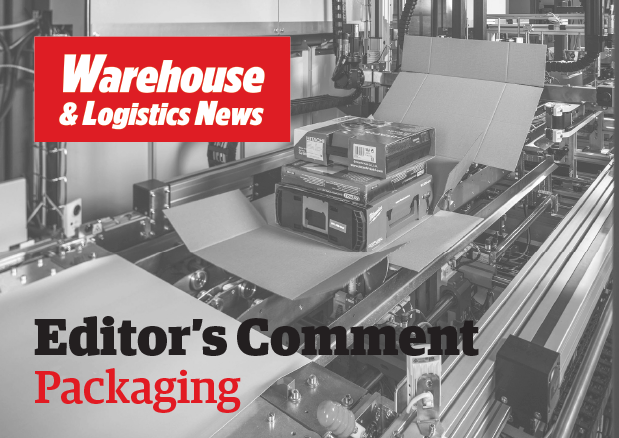Waste packaging and other materials are getting politically uncomfortable as attempts to recycle by pushing the problem overseas begin to backfire. Britain and other developed countries have just been shamed by Malaysia which has returned 152 containers of plastic waste, 42 of them to the UK. The problem has arisen since China banned the imports of plastic waste in 2018, so the waste shipments have been delivered to South-East Asian countries. Malaysia and other countries, however, are fighting back as the country’s environment minister said that those countries who want to make Malaysia the rubbish bin of the world can “dream on.” The waste has been smuggled in to illegal plastic recycling factories and the cost of returning such waste is fully borne by the shipping lines and importers.
This article was first published in the February 1st 2020 issue of Warehouse & Logistics News, subscribe to the magazine by clicking here.
 It is developments like these which emphasise the importance of re-usability before finally recycling and so it is heartening to see innovation is alive and well in Britain to counter the growing mountains of waste packaging. A good example comes for Item Packaging (see elsewhere in this section), a designer and producer of components for the packaging industry. Explaining that the majority of cardboard boxes are only used once, the company is promoting a practical solution called Box Latch, an easy-to-use, re-usable box flap closure that helps create sustainable packaging by making boxes re-usable many times over, particularly as the packaging is not damaged by the use of single use tape or staples for closure purposes. Apart from reducing material costs, the longer term benefits allow companies to reach their waste reduction targets, improve supply chain sustainability and create leaner manufacturing. The Latch Box can be seen on the company’s stand (D17) at the forthcoming packaging innovation show, NEC, February 26-27 for which Warehouse & Logistics News is a media partner. Please come along for a chat on our stand No K6.
It is developments like these which emphasise the importance of re-usability before finally recycling and so it is heartening to see innovation is alive and well in Britain to counter the growing mountains of waste packaging. A good example comes for Item Packaging (see elsewhere in this section), a designer and producer of components for the packaging industry. Explaining that the majority of cardboard boxes are only used once, the company is promoting a practical solution called Box Latch, an easy-to-use, re-usable box flap closure that helps create sustainable packaging by making boxes re-usable many times over, particularly as the packaging is not damaged by the use of single use tape or staples for closure purposes. Apart from reducing material costs, the longer term benefits allow companies to reach their waste reduction targets, improve supply chain sustainability and create leaner manufacturing. The Latch Box can be seen on the company’s stand (D17) at the forthcoming packaging innovation show, NEC, February 26-27 for which Warehouse & Logistics News is a media partner. Please come along for a chat on our stand No K6.
But sustainability is not just about re-use and recycle; it is also about reduce and this is where automation can deliver to cut packaging waste. A Japanese hair products maker, for example, used an e-Cube machine from B+ to reduce the volume of its shipping cases which apart from savings on transport and labour it also benefitted the environment by cutting 50% of the void fill.
Packaging technology has advanced far in recent years to enable quick construction of tailor-made cartons to the exact size automatically. Neopost Shipping’s CVP-500 automated packaging solution, for example, makes a box sized specifically for each single or multi-item consignment. This eliminates oversizing and cuts void fill. Throughput speeds can reach 400 boxes per hour. Two other pluses are savings on carriage costs and carbon emissions owing to fewer lorry trips.
All B2B packaging users, however, should take a holistic view of their entire supply chains to avoid improving one’s own packaging efficiency at the expense of causing problems for others down the line. This is where it may pay to call in packaging experts with world-wide experience of how a global view of packaging in the supply chain can pay big dividends. Alternatively, it may pay to outsource the packaging function, something that Rodney Steel, the CEO of BCMPA, rebranded last year as the Association for Contract Manufacturing, Packing Fulfilment and Logistics, claims is becoming a more sensible option for many businesses.
Bill Redmond, Features Editor




Comments are closed.